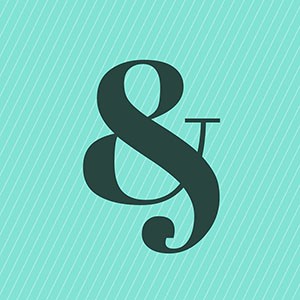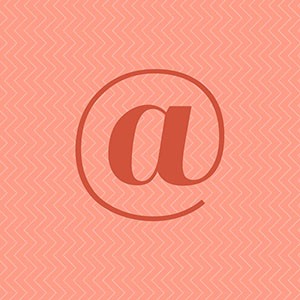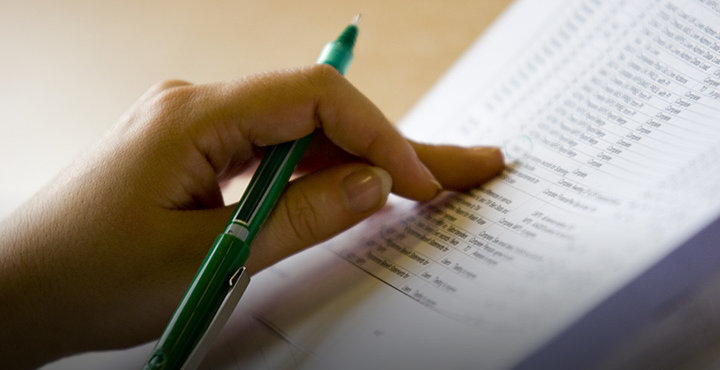Have you ever wondered where the ampersand symbol came from? Or wondered how to use the number sign or the pound sign? We've outlined some common symbols and meanings so you can learn their origins and histories. Let's go!
The Ampersand Symbol (&)
What is the ampersand symbol?
The ampersand symbol is a logogram; in written language, a logogram is a character that denotes a particular word or phrase. In English, the ampersand is the logogram &, which may look more familiar than the word ampersand. The & symbol represents the conjunction and, which is used to grammatically connect words or phrases.
Where did the ampersand symbol come from?
The symbol & comes from the first century AD, when scribes wrote in Latin cursive. The ampersand symbol actually comes from the Latin word et, which means and. Linking the letters e and t created the ampersand symbol. Today, the ampersand symbol still signifies the word and.
The word ampersand, however, is actually a lot newer than the symbol itself—more than 1,500 years newer. When the ampersand symbol was added to the English alphabet in the early 1800s, reciting the alphabet became tricky, as ending it with and was awkward. So schoolchildren would say, "X, Y, Z, and per se and," since per se means by itself. Of course, merging these words creates the word ampersand.
How do I use the ampersand symbol?
Usually, you shouldn't use the ampersand in formal situations, although academic usage depends on the preferred or requested style guide. Ampersands are most commonly seen in business names; in the academic world, you might use an ampersand to join author names in an in-text citation or list of references, such as in APA style. You might also use an ampersand to address a letter or in a screenplay. However, the word and is most commonly preferred.
The At Sign (@)
What is the at sign?
 The @ sign, read aloud as at, was originally most often used in accounting to mean "at the rate of." Today, the at sign is most commonly used in electronic communication. You've probably used it for email addresses and in social media to address a specific person's account, which is why the symbol is now universally found on keyboards.
The @ sign, read aloud as at, was originally most often used in accounting to mean "at the rate of." Today, the at sign is most commonly used in electronic communication. You've probably used it for email addresses and in social media to address a specific person's account, which is why the symbol is now universally found on keyboards.
Where did the at sign come from?
Interestingly, the at sign is known to have been used by monks and was possibly even invented by them to speed up the transcription process (which was, of course, done by hand). Using the at sign helped them to decrease the number of pen strokes necessary to communicate the same information. It's also likely that the at sign originated from à, which means at in Italian.
The at sign was also once used as an abbreviation for amphora. The amphora was a unit of measurement for large terra cotta jars of the same name that were used to ship wine, spices, and grain. The unit later took on a role in commerce to mean at the rate of, where it is still used today.
How do I use the at sign?
As noted, the at sign is used today in commerce and in electronic communication. It is logically used in email addresses and across social media. It's also used in informal speech to signify the word at, but this should definitely be avoided in formal writing.
The Pound Sign (#)
What is the pound sign?
 The pound sign, the number sign, or, more recently, the hashtag are all the same symbol (#). It comes from the Latin abbreviation for weight, lb, standing for libra pondo, which means "pound by weight." Calling it "the number sign" originated in Britain, as the name pound was confused with the British currency (i.e., pounds). Today, it is often referred to as the hashtag, and it also has different meanings for musicians, proofreaders, and computer coders.
The pound sign, the number sign, or, more recently, the hashtag are all the same symbol (#). It comes from the Latin abbreviation for weight, lb, standing for libra pondo, which means "pound by weight." Calling it "the number sign" originated in Britain, as the name pound was confused with the British currency (i.e., pounds). Today, it is often referred to as the hashtag, and it also has different meanings for musicians, proofreaders, and computer coders.
Where did the pound sign come from?
The official name of the pound sign is the octothorpe, a word invented in factories that manufactured telephones. In the 1960s, the telephone keypad was modified to include the pound sign, and octo was used to refer to the eight ends around the edge of the symbol. The use of thorpe is a little less clear; it could be named after famed American athlete Jim Thorpe, it could be a nonsense word, or it could refer to the Old Norse word "thorpe," which means farm or field.
The word hash is actually older than octothorpe. But only recently have hashtags been popularized across social media, especially Twitter, to tag topics of interest on networks to more easily track and find posts on certain topics. According to Benjamin Zimmer, an American linguist and lexicographer, Stowe Boyd was the first to coin the term hashtag in this blog post in which he referred to the use of the hash symbol to tag topics on Twitter.
How do I use the pound sign?
Some style guides might allow for the use of the pound sign to denote the word number, but the pound sign is more commonly used in informal contexts. As mentioned above, musicians may use the sign in reading music (as it indicates a sharp), proofreaders might use it to designate the insertion of a space, and computer coders can use it to mark comments or commands in programming language. Clearly, the usage of the pound sign varies; it is still seen on telephone keypads, but you can also use it to mark hashtags on Twitter. Nifty!
Conclusion
You can't use the symbols &, @, or # in most formal contexts, and most of these symbols and meanings have diverged from their original uses. But the ampersand symbol, at sign, and pound sign are all still in use today, and only time will tell how these symbols and meanings might morph in the future.










